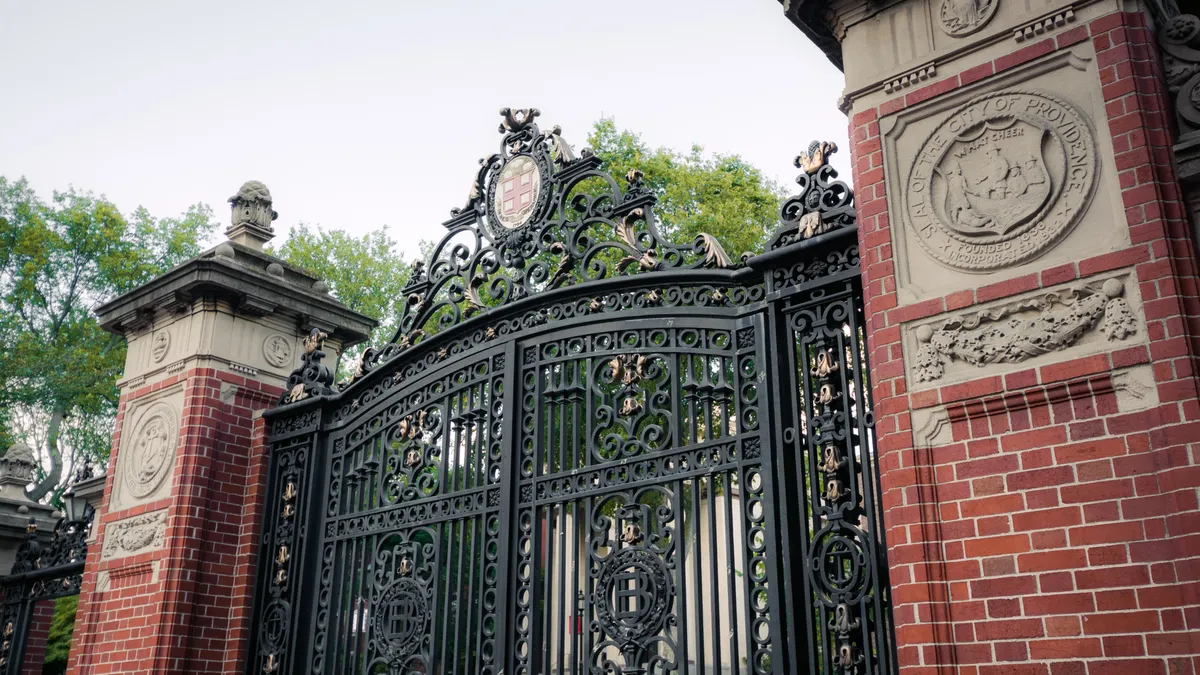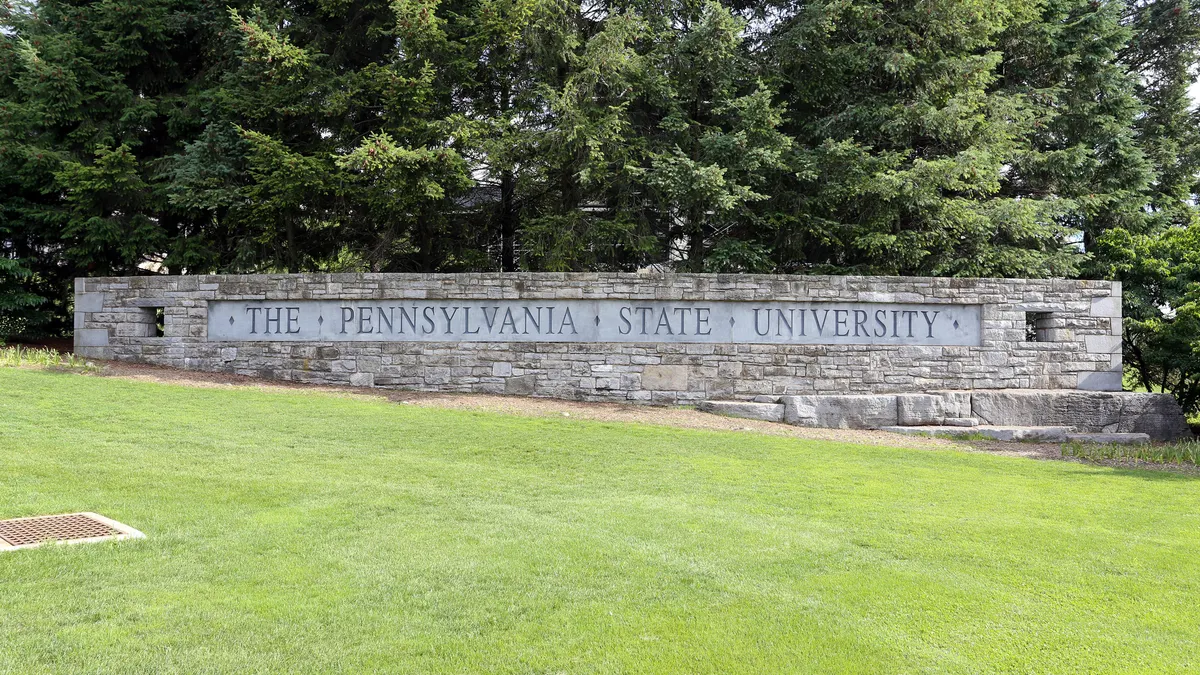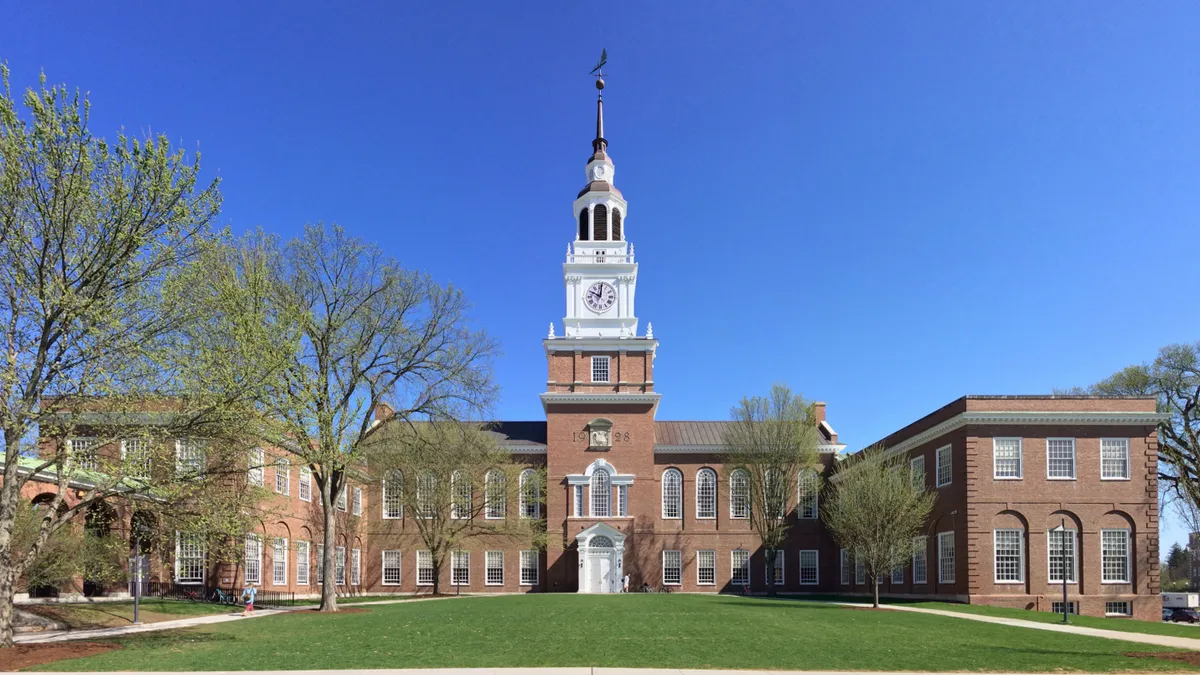Dive Brief:
- Operating margins at private nonprofit colleges have plummeted to their lowest levels in over a decade due to growing financial challenges, especially for tuition-dependent institutions, according to a new Fitch Ratings analysis.
- The median adjusted operating margin, which includes endowment funds for operations, fell to -2.0% in fiscal 2024 for the 56 private nonprofit colleges in Fitch’s portfolio. Despite the median margin sitting squarely in negative territory, the highest-rated colleges still enjoyed positive operating margins.
- Fitch analysts expect the credit environment for the U.S. higher education sector to deteriorate in 2025 year over year, with federal policy shifts likely to increase pressure on operations and revenue.
Dive Insight:
The Fitch analysis reflects the challenging financial environment that private nonprofit colleges are navigating. The litany of problems includes continued inflation, threats to federal funding and an expected decline in the number of high school graduates starting next year.
Amid these challenges, adjusted operating margins shrank for all types of colleges.
That includes the three private nonprofits with AAA ratings from Fitch — the highest one given by the credit rating agency, signaling an institution at very low risk of default. Their median adjusted operating margins declined to 8.4% in fiscal 2024. While “still strong,” that's down from double-digit highs seen during the coronavirus pandemic, according to Fitch.
Colleges with AA ratings showed a median adjusted operating margin of 2.3%, while those with ratings below AA had negative margins, a continuation of a yearslong trend.
Lower-rated colleges tend to rely on tuition as their primary revenue source, while higher-rated colleges are more likely to get large contributions from their healthcare operations or investment returns, according to analysts.
“This growing credit differentiation within the sector highlights mounting financial challenges for less selective, tuition-dependent institutions,” they wrote.
Despite numerous challenges, private nonprofits brought in more tuition and fee revenue in fiscal 2024 than the year before. On average, AA-rated colleges and below saw this revenue stream increase between 1.2 and 3.8%, while institutions with AAA ratings saw a 0.1% decline.
However, this year has brought even more financial turbulence.
“Operating margins and financial flexibility will remain narrow in 2025, as further increases in tuition, if any, will likely be offset by losses in other revenue streams and are unlikely to be sufficient to preserve margins,” analysts wrote.
Financial challenges are not new to much of the higher education sector. But many well-known private research universities are also starting to feel the pressure due to massive drops in federal research funding under the second Trump administration.
The National Science Foundation, for instance, approved only $989 million in new grant funding from Jan. 1 through May 21, according to a recent analysis from The New York Times. That's a massive 51% decline from the 10-year average over the same time period.
On top of the slowdown in new grant approvals, NSF has so far terminated some 1,600 active grants, totaling $1.5 billion in research funding.
Major research universities across the nation — from the University of Southern California to Brown University, in Rhode Island — have signaled they will have to turn to layoffs to grapple with these declines.









